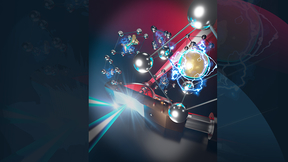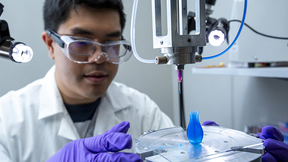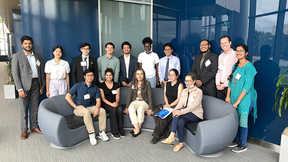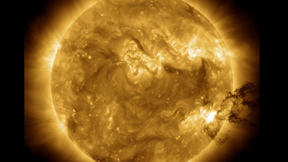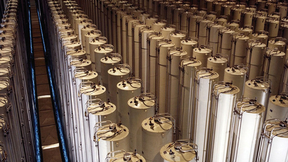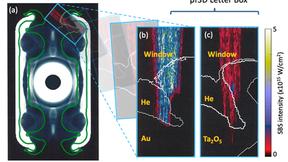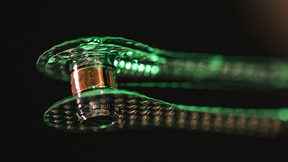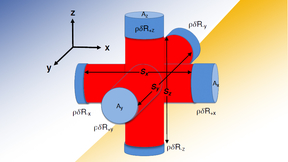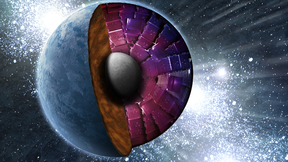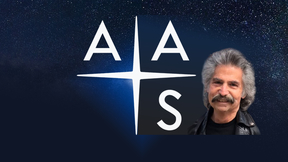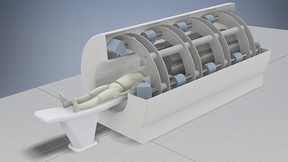Back
Investigating how solid matter behaves at enormous pressures, such as those found in the deep interiors of giant planets, is a great experimental challenge. To help address that challenge, Lawrence Livermore National Laboratory (LLNL) researchers and collaborators took a deep dive in understanding these extreme pressures. The work was just published in Nature Physics with…
The Burning Plasma Team has been awarded the 2022 John Dawson Award for Excellence in Plasma Physics Research by the American Physical Society. The team consists of members from Lawrence Livermore National Laboratory (LLNL) and from other institutions. The team was cited “for the first laboratory demonstration of a burning deuterium-tritium plasma where alpha heating…
Red dwarfs are the most abundant stars in the Milky Way, making up 70% of all stars. But the physics of their interiors is not well understood. Heat is generated in the core and travels outward to the surface, but it is not clear whether that process occurs via radiation, convection or a combination of the two. The key factor determining whether red dwarfs are radiation-…
Lawrence Livermore National Laboratory (LLNL) hosted a group of students and faculty from Historically Black Colleges and Universities (HBCUs) for a week in June to promote internships, job opportunities and career paths at LLNL. Judging from the group’s reaction and feedback, the inaugural week-long HBCU tour was a clear success and made a positive impression on the…
Lawrence Livermore National Laboratory (LLNL) scientists and engineers have garnered three awards among the top 100 industrial inventions worldwide. The trade journal R&D World Magazine recently announced the winners of the awards, often called the “Oscars of invention,” recognizing new commercial products, technologies and materials that are available for sale or…
The leaders of Case Western Reserve University and Lawrence Livermore National Laboratory (LLNL) signed a memorandum of understanding (MOU) to accelerate their efforts in shared areas of excellence. After three years of growing institutional collaboration in such areas as energy, materials science and polymer processing, Case Western Reserve President Eric W. Kaler…
After decades of inertial confinement fusion research, a yield of more than 1.3 megajoules (MJ) was achieved at Lawrence Livermore National Laboratory’s (LLNL’s) National Ignition Facility (NIF) for the first time on Aug. 8, 2021, putting researchers at the threshold of fusion gain and achieving scientific ignition. On the one-year anniversary of this historic achievement,…
Collaborative research and development focused on the extreme ultraviolet (EUV) end of the spectrum has resulted in state-of-the-art, multilayer reflective optics used for space exploration, manufacturing microchips, and more.
The Adaptive Computing Environment and Simulations (ACES) project will advance fissile materials production models and reduce risk of nuclear proliferation.
The National Oceanic and Atmospheric Administration (NOAA) and National Aeronautics and Space Administration (NASA) successfully launched the GOES-T space weather satellite on March 1, 2022. The satellite’s solar ultraviolet imager (SUVI)—an instrument used to record full-disk images at 6 extreme ultraviolet (EUV) wavelengths every few minutes and from a single telescope…
Lawrence Livermore National Laboratory’s decades of leadership in developing high-energy lasers is being tapped to provide a key component of a major upgrade to SLAC National Accelerator Laboratory’s Linac Coherent Light Source (LCLS). Over the next several years, LLNL’s Advanced Photon Technologies (APT) program will design and construct one of the world’s most powerful…
In findings that could help advance another “viable pathway” to fusion energy, research led by Lawrence Livermore National Laboratory (LLNL) physicists has proven the existence of neutrons produced through thermonuclear reactions from a sheared-flow stabilized Z-pinch device. The researchers used advanced computer modeling techniques and diagnostic measurement devices…
The Department of Energy’s (DOE’s) Early Career Research Program (ECRP) aims to bolster the nation’s scientific workforce by providing support to exceptional researchers at U.S. academic institutions and DOE’s national laboratories during their early career years. Annually, ECRP provides research funding to full-time staff in their first 10 years post-doctorate.
A major cost of running the National Ignition Facility (NIF) is managing and mitigating laser-induced damage to optics as the laser beams propagate to the target. Another damage mechanism stems from stimulated Brillouin scattering (SBS) as light travels back from the target and with nearly the same wavelength as the incoming light. This SBS has the potential to cause…
After decades of fusion research, a burning plasma state was achieved on November 2020 and February 2021 at Lawrence Livermore National Laboratory’s National Ignition Facility (NIF), the world’s most energetic laser. Obtaining a burning plasma is a critical step toward self-sustaining fusion energy. A burning plasma is one in which the fusion reactions themselves are the…
Dylan Hoagland (PHYS) has won the 2021 ANS Mark Mills award. This award is presented to the student author who submits the best original technical paper contributing to the advancement of science and engineering related to the atomic nucleus. Dylan’s paper, “Solution of the Neutron Transport Equation on Unstructured Grids Using the Parallel Block Jacobi-Integral Transport…
New research conducted at Lawrence Livermore National Laboratory (LLNL) explores the expansion of a classical mechanics model, which has been useful for understanding asymmetries in inertial confinement fusion (ICF) implosions, from a two-piston to a six-piston model to capture higher-mode asymmetries. The work is featured in the Physics of Plasmas. LLNL authors included…
The discovery of more than 4,500 extra-solar planets has created a need for modelling their interior structure and dynamics. As it turns out, iron plays a key role. Lawrence Livermore National Laboratory (LLNL) scientists and collaborators have used lasers at the National Ignition Facility to experimentally determine the high-pressure melting curve and structural…
LLNL physicist Richard Klein has been selected as a 2022 fellow of the American Astronomical Society. Klein, who was selected “for broad and influential contributions to computational astrophysics, for scientific achievements on radiatively-driven stellar winds and star formation theory and for training a generation of students and postdoctoral scholars,” is one of 23…
Researchers at Lawrence Livermore National Laboratory (LLNL) have shown for the first time the potential for linear induction accelerators (LIAs) to deliver effective, targeted doses of “FLASH” radiation to cancer patients. The new technique selectively kills cancer cells with minimal damage to healthy cells. The approach is outlined in a Scientific Reports paper. For…

